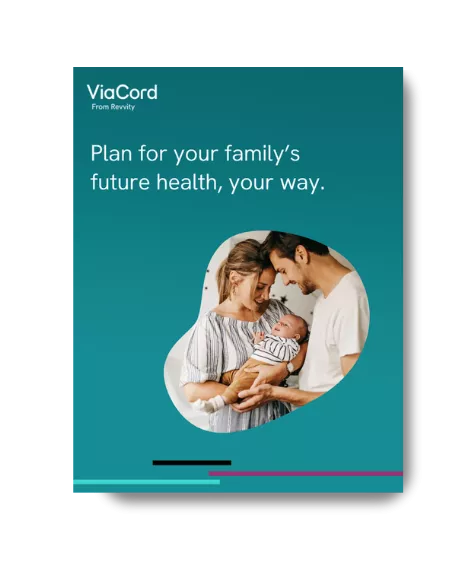March 25th is National Cerebral Palsy Awareness Day.
National Cerebral Palsy Awareness Month takes place every March, but today marks the culmination of this year's celebration with National Cerebral Palsy Awareness Day!
It's a fitting day to help spread awareness about cerebral palsy (CP) and share some knowledge about exciting CP research using cord blood. Okay, let’s get started...
What is Cerebral Palsy?
Cerebral palsy (CP) is a group of neurological disorders that appear in infancy or early childhood and permanently affect body movement and muscle coordination. The term cerebral refers to the brain; palsy refers to the loss or impairment of motor function. CP is caused by abnormal brain development or damage to the brain.1
Here are some quick facts about CP from the Centers for Disease Control (CDC):2
- Most cases (85%-95) occur during pregnancy or birth
- It's the most common motor disability in childhood
- 1 in 345 children in the U.S. are identified with CP
- In many cases, the specific cause is not known. Possible causes include genetic abnormalities, congenital brain malformations, lack of oxygen, maternal infections or fevers, and fetal injury
- There is no cure for CP today
Living with Cerebral Palsy
All people with cerebral palsy have problems with movement and posture, but the types of symptoms and severity vary from person to person. 3 Some people may have a slight challenge walking, while others may not be able to walk at all or may have impaired vision or speech problems.
According to the National Institute of Neurological Disorders and Strokes, CP has a wide range of symptoms, including:
- Lack of muscle coordination when performing voluntary movements
- Stiff or tight muscles and exaggerated reflexes
- Walking on the toes, a couched gait, or a "scissored gait"
- Variations in muscle tony, either too stiff or too floppy
- Shaking (tremor) or random involuntary movements
- Difficulty with precise movements, such as writing or buttoning a shirt
Cerebral Palsy Treatment Options
CP does not currently have a cure, but there are treatments to improve quality of life. The type of treatment depends on the severity of CP and may include physical and other therapies, drugs, and possibly surgery. As science, technology, and research advance, there is hope that a cure will be found one day.
CP and Cord Blood’s Potential Role
Clinical trials using cord blood stems in children with cerebral palsy have been underway in the last few years. This research aims to determine if cord blood stem cells will regenerate or facilitate repair by stimulating the body's own repair mechanisms.
A Phase II clinical trial was completed at Duke University to treat children with cerebral palsy. The study consisted of 63 children, including multiple children who had their cord blood banked with ViaCord, who received one infusion of their banked cord blood. Researchers found that both brain connectivity and motor function improved when the children received an adequate dose of their cord blood. Results were published in Stem Cell Translational Medicine and featured in the news.
Want to stay up to date on all things Cord Blood and Cord Tissue? Follow us on Facebook, Twitter, and Instagram!
Disclaimer: Banking cord blood does not guarantee that treatment will work, and only a doctor can determine when it can be used. PerkinElmer or ViaCord does not endorse or make recommendations with respect to research, medication, or treatments. All information presented is for informational purposes only and is not intended as medical advice.
1. National Institute of Neurological Disorders and Strokes
https://www.ninds.nih.gov/Disorders/Patient-Caregiver-Education/Hope-Through-Research/Cerebral-Palsy-Hope-Through-Research#3104_2
https://www.cdc.gov/ncbddd/cp/facts.html
https://www.ninds.nih.gov/Disorders/Patient-Caregiver-Education/Hope-Through-Research/Cerebral-Palsy-Hope-Through-Research











